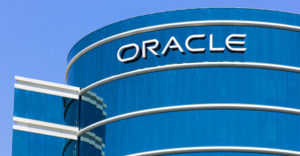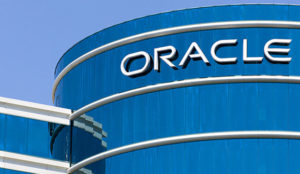Not too long ago, commerce executives worried about how to make their digital systems as good as in-person interaction. They had reason to worry, too.
There were too many systems, each with its own data, and most of the information needed to, for instance, sell a mortgage was in someone’s head, and too often, that person wasn’t in the conversation. Predictive analytics systems were in their infancy and required enough CPU horsepower to dim the lights.
Available systems were, to put it mildly, hard to use for both customers and vendors. So hard to use that people felt abandoned and complained bitterly on blogs and social media. But the industry heard the complaints and was stung by the public outcry, learned a lot, and eventually began to apply advanced technologies.
Today, the situation could not be more different.
Arrays of analytic and machine learning systems give the impression of knowing more about customers and their needs than they do. The result has been a complete transformation of sales and especially marketing from reactive to proactive pursuits.
Marketing automation, which started out as an elaborate accounting system for the CFO to track marketing spending, is now responsible for identifying likely buyers and nursing them along a path to salespeople or direct retail.
Salesforce has been an important player in that evolution both because of its platform and cloud delivery system and because it bought many of the freestanding companies that made the revolution possible.
Adding companies like Pardot and Tableau together had a multiplier effect that couldn’t have been easily achieved if they remained standalone, especially when you add MuleSoft, another acquisition focused on integrating systems, to the picture.
This week, Salesforce holds its marketing conference, Connections, online to accommodate the pandemic. But aside from that, the marketing automation juggernaut continues. Here, I think the story makes an important turn.
Advent of an Information Utility
I’ve been arguing that an information utility is being born as we watch companies like Salesforce deploy increasingly sophisticated systems that grind common data into useful information that companies use as the raw material to manufacture money.
I’ve also argued that companies like Oracle, in their drive to deploy increasingly sophisticated and powerful infrastructures, including data storage, encryption, and access, as well as advanced processing, are building out the 21st century’s physical information utility.
Now, I am ready to say that the utility won’t look like the electric or transportation utilities of the 19th century, but that the information utility now takes on the character of the cable industry with bandwidth suppliers and content providers.
I’d put Oracle in the realm of infrastructure but also content because they promote both. Salesforce, on the other hand, might be more characterized as a content provider simply because it bundles infrastructure and content to a higher degree.
The other difference between other utilities and the information utility is that the new information utility is unique to each company rather than generic. An electric utility provides the same product to all customers with a multiplicity of rates, such as the cost per kWh to a municipality at night.
In contrast, every business might have access to an information utility in the cloud, but each is different in the data it collects and how it grinds it to produce information.
Salesforce CDP
Reflecting all that, last week, Salesforce introduced marketing and commerce products and enhancements that radiate out from a central customer data platform or CDP. If you want a fuller description, check out their website, here are some highlights.
Salesforce CDP brings together CRM data from across the business, processes it, and supplies the resulting information to marketing, advertising, and commerce. The information drives business processes that focus on marketing, personalization, and commerce. This supplies the raw material that enables automatic and precise messaging, resulting in a dynamic experience.
So, for instance, Interaction Studio can analyze cross-channel brand interactions and can apply Einstein analytics to send a relevant message. Similarly, Loyalty Management applies what’s known about existing customers to send appropriate messages involving possible next steps in building a relationship.
When applied to commerce, Salesforce CDP for Commerce focuses on first-party customer data across touchpoints for use in cross-channel marketing.
There are also developer tools like the Headless PWA Kit and Managed Runtime (I am not making up the headless bit) that enable fast development of customer-facing experiences.
Simply put, when the market changes, companies can better adjust to new opportunities. This is a critical introduction because, in many markets today, there are few vendor distinctions that can’t be disrupted.
Vendors who once leveraged their size or financial prowess find that upstarts can adjust and work around them. Consequently, the most salient differentiator is being able to be first in the game with relevant offers.
There’s also an order management offering and, perhaps most importantly, a recently introduced career learning path for professional marketers in Trailhead. This is rather shrewd because, very often, advancements in product offerings that change how we work are only adopted slowly because training is meager or non-existent, and vendors fail to garner the return they expect on their inventions.
By introducing a marketing career learning path, Salesforce might be able to accelerate market uptake.
My Two Bits
If we really are looking at the dawn of a 21st-century information utility, it seems like most of the parts and pieces are in place for individual businesses to harvest the raw materials of success from their data. This also gives us a more concrete understanding of what the digital disruption needs to be about.
A lot of time and treasure has already been spent on “going digital,” with no clear understanding of what that should mean. But going digital should, at least in part, mean taking full responsibility for turning a business’ mountain of customer data into usable information that advances the company mission.
We’ll never get to the point where our automated interactions with customers always approximate a person-to-person encounter, but this is doing something better. At the early stages of a customer experience, when people primarily want information, we now have the tools to provide it automatically and with a high degree of confidence that it’s the right stuff.
If and when the interest matures, we also have the tools to insert more expensive assets with a higher probability of success.





























































Social CRM
See all Social CRM